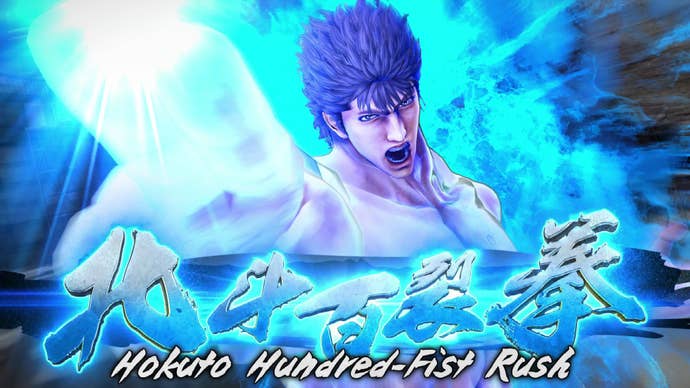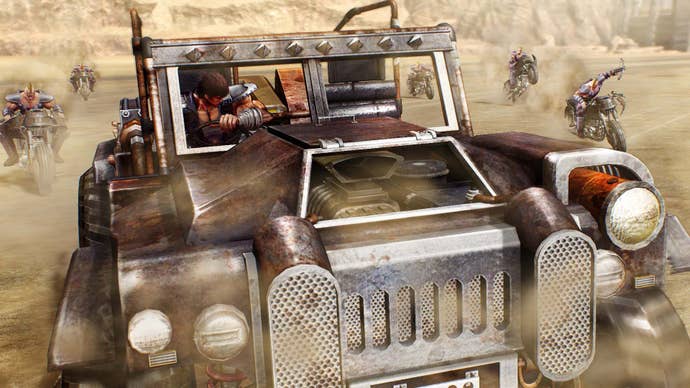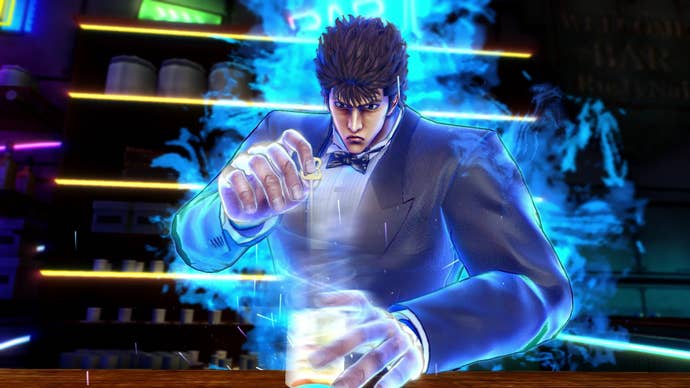Fist of the North Star: Lost Paradise Producer on Balancing Kenshiro's Power in Gameplay
We talk to Fist of the North Star: Lost Paradise's producer about Yakuza Studio's first licensed game.
This article first appeared on USgamer, a partner publication of VG247. Some content, such as this article, has been migrated to VG247 for posterity after USgamer's closure - but it has not been edited or further vetted by the VG247 team.
We've come a long way from the beginnings of the Yakuza franchise and Ryu ga Gotoku/Yakuza Studio. When the series first came out on the PlayStation 2, localization was sporadic and the Western fanbase was limited. Now a much-larger fanbase feasts, with four Yakuza titles released in the last two years: Yakuza 0, Yakuza Kiwami, Yakuza 6, and Yakuza Kiwami 2. The studio is also working on Shin Ryu ga Gotoku, the next game in the series, starring new protagonist Ichiban Kasuga.

As Ryu ga Gotoku Studio has grown, so too have the chances for the studio to branch out beyond Yakuza itself. Prior to the upcoming Tokyo Game Show, it announced Judge Eyes/Project Judge for PlayStation 4, a new title starring popular Japanese actor Takuya Kimura. Kimura's inclusion in the game continues Ryu ga Gotoku Studio's trend of working with major Japanese actors like Takeshi Kitano, Oguri Shun, Shingo Tsurumi, and Hitoshi Ozawa, all lending their voices and likenesses to the series.
Next month sees the Western launch of Ryu ga Gotoku Studio's first licensed title, Fist of the North Star: Lost Paradise. Known in Japan as Hokuto ga Gotoku, it marries the classic Fist of the North Star series to Yakuza's distinct style of play. We spoke to Fist of the North Star: Lost Paradise producer Daisuke Sato about the upcoming release.

USgamer: Why was Fist of the North Star the first licensed property that Yakuza Studio team (RGG) decided to work on?
Fist of the North Star: Lost Paradise producer Daisuke Sato: We determined that Hokuto no Ken (Fist of the North Star) would be the perfect IP to utilize the know-how and systems we cultivated through the Ryu ga Gotoku (Yakuza) series, and that’s how the collaboration started up. There’s a certain similar intensity between the story and characters of Fist of the North Star and those found in the Yakuza series. Both are driven by their powerful action sequences, too, so it was a great match.
What other properties did the team think of prior to starting work on Fist of the North Star?
DS: We did explore various other IPs at the start of the project, but Fist of the North Star was by far the IP that best matched our vision, so the other IPs didn’t make it past the early "consideration" stage.
What was the negotiation process between Yakuza Studio and the rightsholder like?
DS: It was a very smooth process. Conveniently, [North Stars Pictures] was celebrating the 35th anniversary of Fist of the North Star at the time. They were looking for various content providers to collaborate with, so it was quickly decided that we would work together. NSP was extremely supportive every step of the way, and they encouraged us to implement any interesting or fun ideas we had. This freedom helped the game stand out as a fresh departure from other collaboration titles.

Ultimately, what was the most difficult part about bringing Fist of the North Star to life?
DS: That would be structuring Kenshiro’s growth. It was very difficult to accurately represent the iconic action of Hokuto Shinken while keeping Kenshiro’s strength reasonable for gameplay. If we dialed up Kenshiro’s power too much, then combat with the enemies would feel unbalanced and unsatisfying. So, we decided to center the action on the "Hidden Channeling Points" system, since that’s one of the most iconic elements of Hokuto Shinken. If you manage to strike a Hidden Channeling Point, you can defeat powerful foes in an instant. It was a challenge to balance the gradual growth of Kenshiro’s abilities with the power of the player’s action commands.
Why use the older Yakuza engine instead of the brand-new Dragon Engine?
DS: The Dragon Engine was not complete at the time this project came up. Yakuza 6 was still in development, and the Dragon Engine was constantly evolving as that project went on. If we’d used an incomplete and volatile engine for this entirely different title, we’d still have to make various adjustments that suited the main title (Yakuza 6)’s needs. Furthermore, Lost Paradise had various expression requirements of its own, including several graphical demands, and customizing an incomplete engine’s output to meet these requirements would have been too risky. Therefore, we decided it’d make more sense to use the already-complete engine we used in Yakuza 0 and Yakuza Kiwami.

One new addition to the game is the driving segments in the desert; how hard was it for the team to implement those within the old engine?
DS: We managed to create that mode from the ground up, even using the old engine. It was definitely a challenge to create a whole new feature with no previous experience, but we thought that it was extremely important that Lost Paradise feature some varied challenges for the player’s enjoyment.
Fist of the North Star was made by a newer team with Yakuza Studio; can we expect more newer, unique projects from that team in the future? Is the Yakuza team as a whole up for doing more licensed projects?

DS: I can’t say one way or the other at this time, but we at the RGG studio would like to continue taking on new opportunities and challenges as they come. If we have the chance to work with an IP that we’re confident in, RGG Studio may attempt another licensed project.
Fist of the North Star" Lost Paradise is coming to PlayStation 4 on October 2, 2018. A demo of the game is available right now on the PlayStation Store if you want to jump in and see what all the fuss is about.









